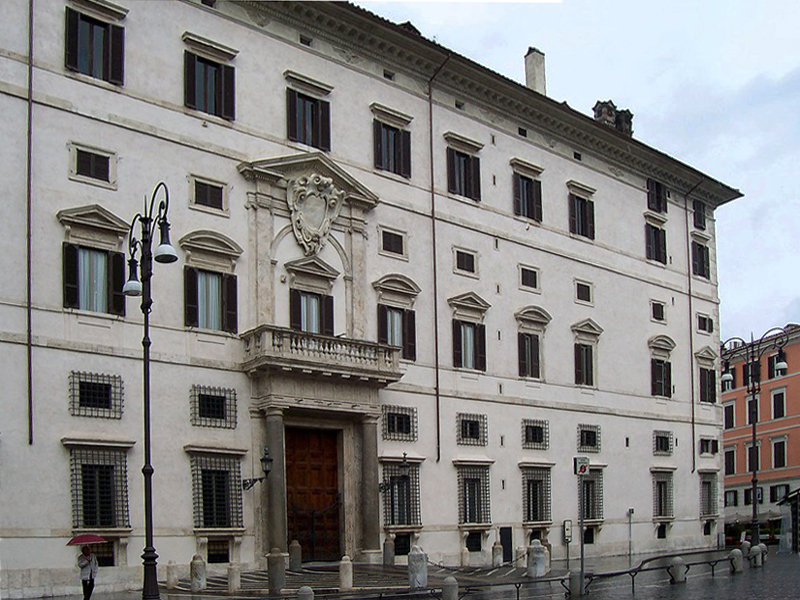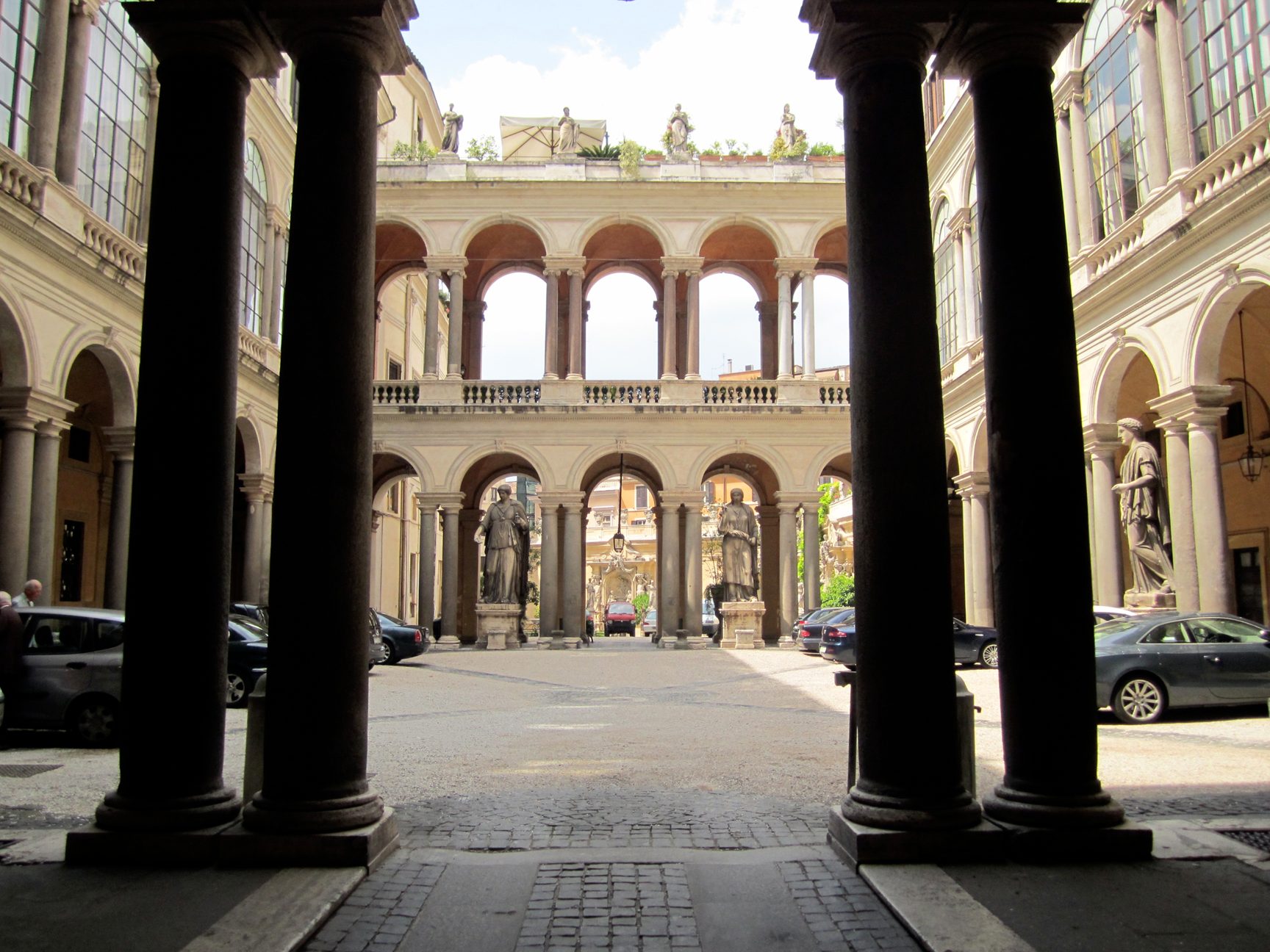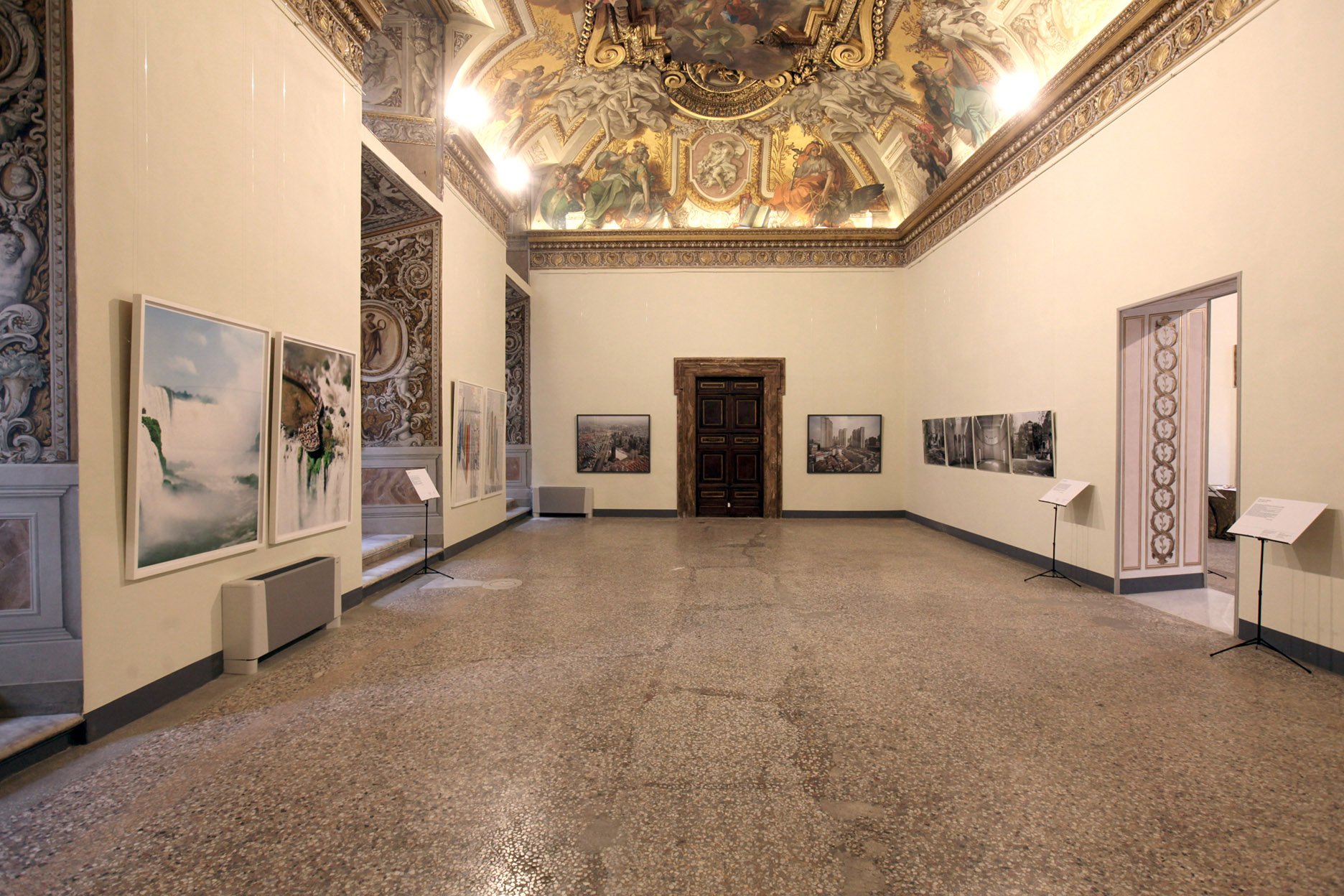

The history of the Cembalo Gallery is of course that of the Borghese Palace, which was built in the years between 1605 and 1676, incorporating pre-existing residential structures. Like many Roman palaces, it saw the participation of various famous architects who intervened in the different stages of its growth until the completion of the great volume we see today, with its irregular shape leaning toward the river that gave it the name Cembalo Borghese.

"Therefore it is said by the people that the four wonders of Rome are the Farnese dado, the Borghese cymbal, the Caetani staircase and the Carboniani gateway." Giuseppe Antonio Guattani, Roma descritta e illustrata, (1805).

The earliest and oldest nucleus of the palace is on Largo della Fontanella di Borghese, a small palace by Tommaso del Giglio based on a design by Vignola (1590), later by Cardinal Deza, who entrusted its enlargement to Martino Longhi the Elder and later to Flaminio Ponzio. The Deza and Giglio insignia are still visible in the archivolts of the courtyard arches near the entrance. With the purchase by Cardinal Camillo Borghese, future Pope Paul V, work continued until 1613 and saw further interventions in the following years at the hands of Carlo Maderno, Giovanni Vasanzio (1670) and Carlo Rainaldi.
Cembalo Gallery - Borghese Palace
Address: Largo della Fontanella di Borghese, 19, 00186
Phone: 0683796619
Site:
http://www.galleriadelcembalo.it/ita/Location inserted by
CHO.earth